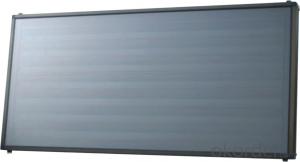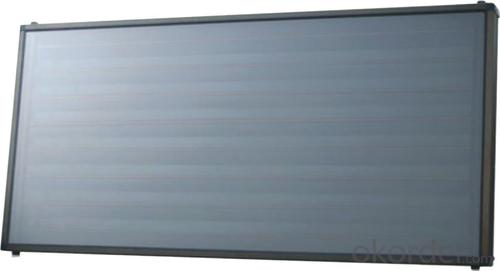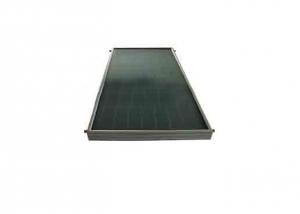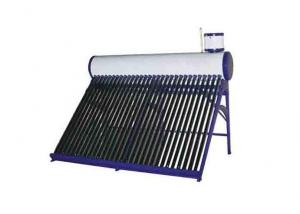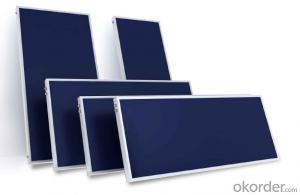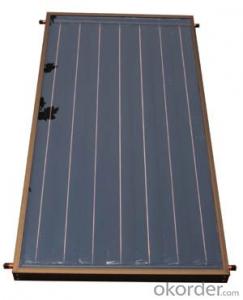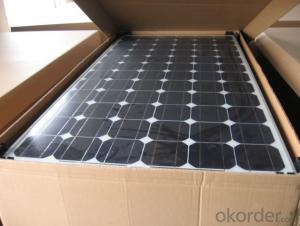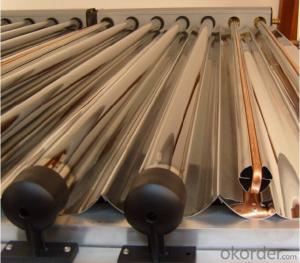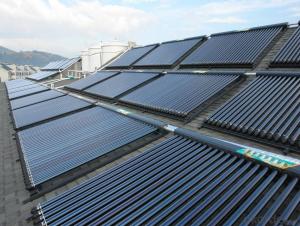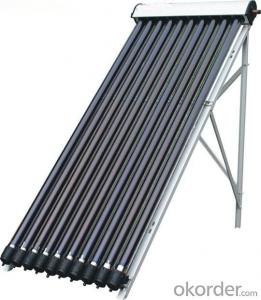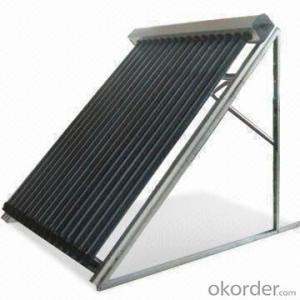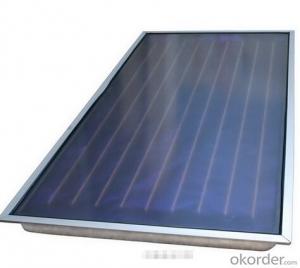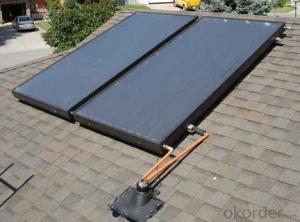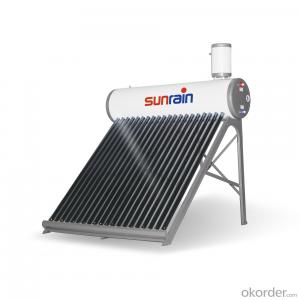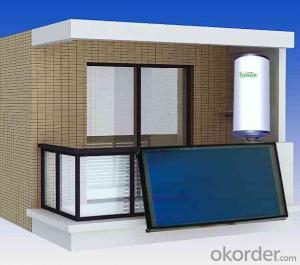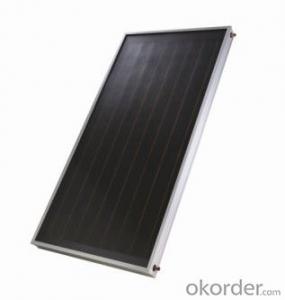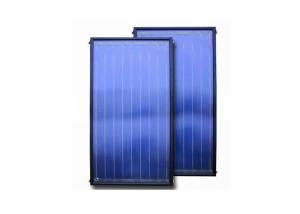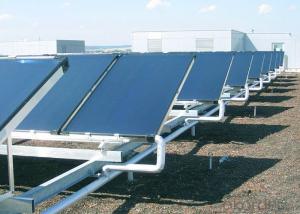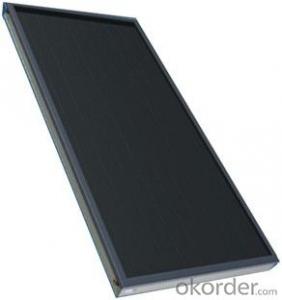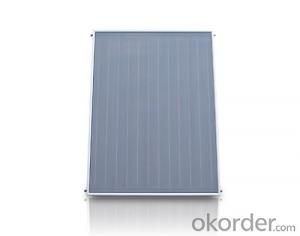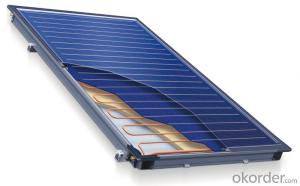Dome-Shaped Solar Energy Collector with Solar Thermal Absorber and Vacuum Solar Collector with Heat Pipe
- Loading Port:
- Shanghai
- Payment Terms:
- TT OR LC
- Min Order Qty:
- 500 pc
- Supply Capability:
- 10000 pc/month
OKorder Service Pledge
Quality Product, Order Online Tracking, Timely Delivery
OKorder Financial Service
Credit Rating, Credit Services, Credit Purchasing
You Might Also Like
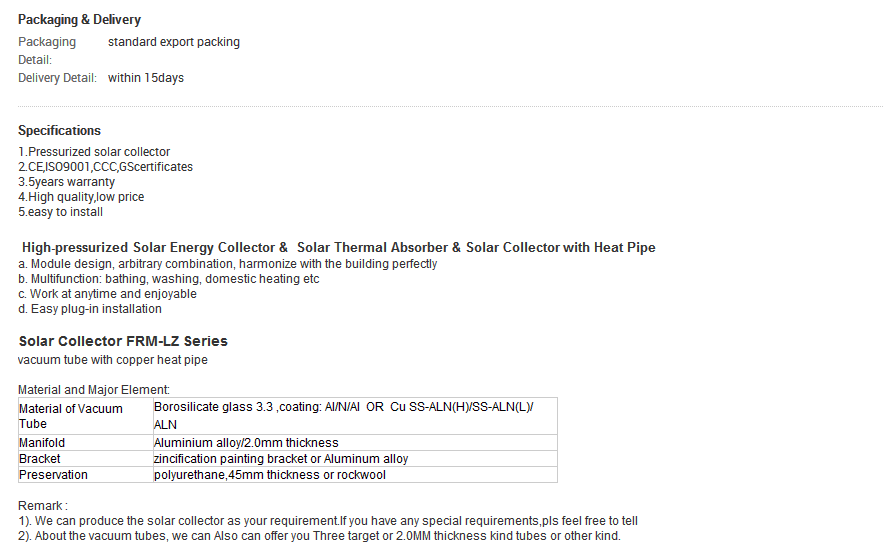
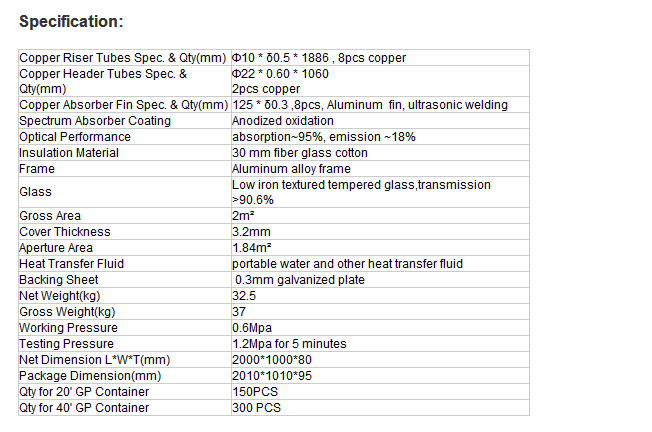
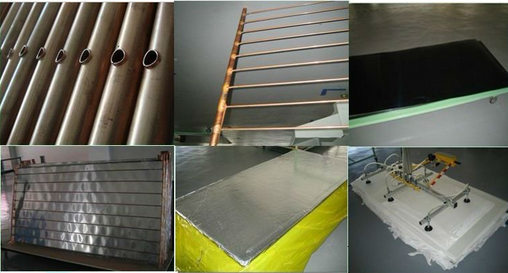
- Q: How do solar collectors impact cultural heritage sites?
- Cultural heritage sites can be affected, both positively and negatively, by the installation of solar collectors. On the positive side, solar collectors offer a sustainable and environmentally friendly energy source, reducing the site's carbon footprint and dependence on fossil fuels. This contributes to the long-term preservation of cultural heritage sites by minimizing their environmental impact. Furthermore, solar collectors can also generate revenue for the upkeep and conservation of cultural heritage sites. By harnessing solar energy, these sites can sell excess electricity to the grid, generating income that can be used to fund conservation efforts and ensure the sites' longevity. However, it is crucial to carefully consider the design and placement of solar collectors to minimize any negative effects they may have on cultural heritage sites. In some cases, poorly designed or improperly placed solar collectors can visually detract from the site's aesthetic appeal and architectural integrity. This can compromise the overall value and authenticity of the cultural heritage site, potentially impacting its tourism potential and cultural significance. To counteract these negative impacts, it is important to involve heritage conservation experts and local communities in the planning and implementation of solar collector projects. By taking into account the site's unique characteristics, historical significance, and architectural features, solar collectors can be integrated in a manner that minimizes their visual impact and respects the cultural heritage value of the site. In conclusion, solar collectors can positively impact cultural heritage sites by providing sustainable energy and generating revenue for their preservation. However, careful consideration must be given to their design and placement in order to ensure they do not compromise the authenticity and value of these important landmarks.
- Q: How do solar collectors perform in areas with high levels of airborne debris?
- Solar collectors can still function effectively in areas with high levels of airborne debris, although their efficiency may be slightly diminished. Airborne debris, including dust, pollen, and leaves, can accumulate on the surface of the solar collectors and hinder the amount of sunlight reaching the absorber plate. Consequently, this can result in a decrease in the amount of heat generated by the collectors. Nonetheless, modern solar collectors are designed to be efficient and somewhat self-cleaning. Many collectors are equipped with a smooth surface and are tilted at an angle to prevent debris buildup. Furthermore, certain collectors come with automatic cleaning mechanisms, such as brushes or water sprays, that periodically remove debris. Maintaining and cleaning the solar collectors regularly is crucial in areas with high levels of airborne debris. This may involve manual removal of accumulated debris or using water or air pressure to clean the surface. By ensuring the collectors remain clean, their performance can be maintained at optimal levels. It is important to note that the impact of airborne debris on solar collector performance can vary depending on the type and thickness of the debris, as well as the specific design and technology of the collectors. In some instances, the reduction in efficiency may be minimal, while in others, it could be more significant. To accurately assess the exact impact, it is advisable to consult with a solar energy professional who can provide a more precise evaluation based on the specific conditions and characteristics of the area.
- Q: Can solar collectors be used for heating military facilities?
- Yes, solar collectors can be used for heating military facilities. Solar thermal systems can efficiently capture and convert sunlight into heat energy, which can then be utilized for heating purposes in various buildings, including military facilities. Implementing solar collectors for heating can help reduce reliance on traditional fossil fuels, lower energy costs, and contribute to a more sustainable and environmentally friendly solution for military heating needs.
- Q: Are there any zoning restrictions for solar collector installations?
- Yes, there are zoning restrictions for solar collector installations. These restrictions vary depending on the location and local regulations. They may cover aspects such as the size, height, placement, and appearance of solar collectors, as well as setbacks from property lines and other structures. It is advisable to consult with local authorities or a professional to ensure compliance with zoning restrictions before installing solar collectors.
- Q: Can solar collectors be used in waste-to-energy plants?
- Solar collectors are indeed capable of being utilized in waste-to-energy plants. These plants convert waste materials into usable energy, usually in the forms of heat or electricity. To supplement the energy production process, solar collectors, such as solar thermal collectors or photovoltaic panels, can be integrated into these plants. The utilization of solar thermal collectors involves capturing solar energy and transforming it into heat. This heat can then be employed in waste-to-energy plants to generate steam, which powers turbines for electricity production. By incorporating solar thermal collectors, waste-to-energy plants can decrease their reliance on fossil fuels, reduce greenhouse gas emissions, and enhance overall energy efficiency. Moreover, photovoltaic panels can also be implemented in waste-to-energy plants to directly convert sunlight into electricity. This electricity can be utilized to operate various functions within the plant or even be fed back into the power grid. By employing solar collectors, waste-to-energy plants can diversify their energy sources and further contribute to renewable energy objectives. Nevertheless, it is crucial to consider various factors such as available space, climate conditions, and cost considerations when integrating solar collectors into waste-to-energy plants. Depending on the specific circumstances, waste-to-energy plants may prioritize other renewable energy sources like wind or biomass. However, the use of solar collectors in waste-to-energy plants presents a practical option to enhance sustainability and minimize environmental impact in energy generation from waste.
- Q: Are there any government incentives or subsidies available for solar collectors?
- Yes, there are several government incentives and subsidies available for solar collectors. These incentives vary by country and region but commonly include tax credits, grants, rebates, and net metering programs. These initiatives aim to promote the adoption of renewable energy sources like solar power and make it more affordable for individuals and businesses to invest in solar collectors.
- Q: Are solar collectors suitable for heating shopping malls?
- Yes, solar collectors are suitable for heating shopping malls. They can effectively harness the sun's energy to provide heating, reducing reliance on traditional heating systems and lowering energy costs. Additionally, solar collectors are environmentally friendly, promoting sustainability and reducing carbon emissions. However, the feasibility and effectiveness of solar collectors in heating shopping malls may depend on factors such as the mall's size, location, and energy requirements.
- Q: Can solar collectors be used in waste management facilities?
- Yes, solar collectors can be used in waste management facilities. Solar energy can be harnessed by collectors to generate electricity or heat, which can be utilized in waste management processes such as powering equipment or facilities, heating water for waste treatment, or even converting waste into energy through advanced technologies like anaerobic digestion or thermal gasification. This helps to reduce the reliance on traditional energy sources, decrease greenhouse gas emissions, and promote sustainable waste management practices.
- Q: Can solar collectors be used in remote areas without electricity?
- Yes, solar collectors can be used in remote areas without electricity. Solar collectors, also known as solar panels, are designed to convert sunlight into electricity. They can generate power even in remote locations as long as they receive sufficient sunlight. These panels can be used to provide electricity for various purposes such as lighting, heating, and charging electronic devices, making them an ideal solution for off-grid areas.
- Q: Can solar collectors be used for heating historical sites?
- Yes, solar collectors can be used for heating historical sites. Solar heating systems can be installed to provide a sustainable and efficient source of heat for historical buildings. They can be integrated seamlessly into the design of the site, preserving its aesthetic value while reducing carbon emissions and energy costs. Additionally, solar collectors are a renewable energy solution, making them an environmentally-friendly choice for heating historical sites.
Send your message to us
Dome-Shaped Solar Energy Collector with Solar Thermal Absorber and Vacuum Solar Collector with Heat Pipe
- Loading Port:
- Shanghai
- Payment Terms:
- TT OR LC
- Min Order Qty:
- 500 pc
- Supply Capability:
- 10000 pc/month
OKorder Service Pledge
Quality Product, Order Online Tracking, Timely Delivery
OKorder Financial Service
Credit Rating, Credit Services, Credit Purchasing
Similar products
Hot products
Hot Searches
